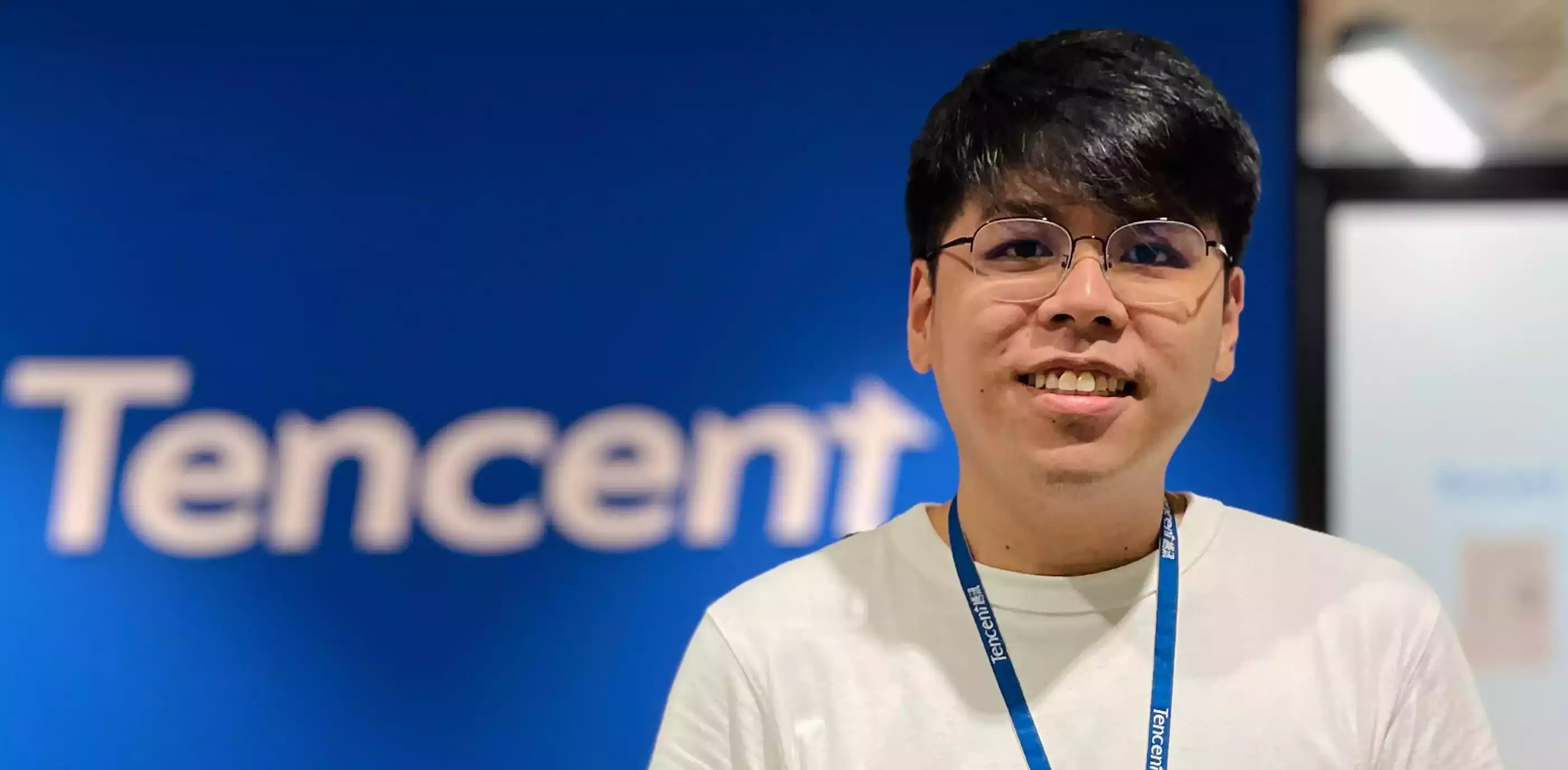When people think about an artist’s job, the mental image that comes to mind isn’t of said artist sitting in front of a screen and typing out lines of code. But this is not unusual for 2017 BFA in Digital Art and Animation graduate Mandl Cho, who is forging a career as a technical animator at Tencent Games.
While a traditional animator deals with performance and animation pipelines, technical animators work on designing systems and tools to minimize the amount of actual animation work needed. “In short, traditional animators provide the animation assets and technical animators piece them together while ensuring that there’s no compromise on the animation quality and responsiveness,” Mandl explains. He adds that technical animators are also the ones who help find ways to improve the workflows and efficiencies of traditional animators. Mandl’s day-to-day work consists of developing tools for digital content creation software such as Maya and Motionbuilder, setting up animation systems and debugging gameplay logic, researching and developing procedural animation pipelines in Unreal Engine, and more.
Mandl’s interest in art started since he was a young boy and he recalls doodling and drawing with whatever medium he had whenever the opportunity arose. Art was a way for him to describe what he saw and eternalize that on paper, which he found immensely satisfying. This love for art led Mandl to pursue a diploma in Digital Animation from Nanyang Polytechnic, and he subsequently furthered his skills at DigiPen (Singapore)’s BFA in Digital Art and Animation program. While studying, Mandl also freelanced for Anomalyst Studio as a 3D generalist where he worked on short animated clips. He then pursued an internship as a 3D generalist at CraveFX in his last trimester of school.
Upon graduation, Mandl joined Ubisoft Singapore as a junior animator where he worked on games such as Assassin’s Creed Origins, Assassin’s Creed Valhalla, and Skull & Bones. Mandl started his role doing traditional animation where he worked on cinematic sequences and previsualization, but his natural curiosity and constant hunger to learn new things prompted him to start helping out in projects from other departments. “At Ubisoft Singapore, ownership is greatly encouraged,” Mandl says. “I’ve also adopted the mindset of ‘if you ask for it, you get to do it,’” he adds. And ask, he did. While working on cinematics for Assassin’s Creed Origins, Mandl became intrigued by how things worked after the motion caption sequences were polished, and decided to take it upon himself to understand how the cinematic pipelines worked. This experience — and more — paved the way for Mandl to transition into the role of a technical animator in 2019, two years after he first joined Ubisoft Singapore.
Despite the satisfaction that Mandl got when he transitioned from being a traditional animator to a technical animator, the process was daunting. “It was overwhelming at times,” he says. “I went from being one guy on the team who was asking questions, to the guy on the team that everyone looked to for answers and solutions.” On one occasion, Mandl asked to take charge of designing and building an animation system for the longships — a type of Scandinavian warship — in Assassin’s Creed Valhalla. Though he wasn’t familiar with the process, Mandl applied what he knew from observing how previous games were made and adopted similar best practices for his team. When Mandl first started on the project, there was only one junior animator and a programmer with him on the team. By the time the project had ended, the team had grown to 13-members strong. The team also managed to optimize the animations for the longships in the game and Assassin’s Creed Valhalla launched in 2020 to positive critic reviews.
After that project, Mandl took his career to the next level by joining Tencent Games in end 2020 as a senior technical animator. He is currently working on an unannounced project and hopes to build a world-class animation production pipeline and push the standards for animation and motion-capture production within his company. He also looks forward to experiencing the full cycle of mobile game development in his role, after experiencing several cycles of AAA console game development.
When asked about how life as a technical animator differs from that of a traditional animator, Mandl is quick to point out that both roles are enjoyable and it just boils down to solving different sets of problems. “As a technical animator, you rarely encounter the same problem twice, which forces you to be able to think critically and adopt creative methods to solve difficult problems,” Mandl says. “I love it, and I’ve never looked back since.”
